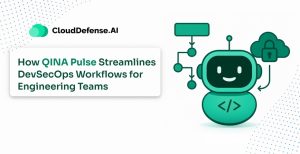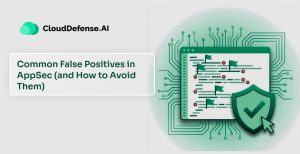Application security has always been a cornerstone of modern organizations’ security posture. Most organizations are adopting Agile and DevOps development methodology to deliver applications faster to the market. However, to maintain a secure yet high velocity development process, automating AppSec workflow has become a necessity.
It helps your security team automate repetitive security processes and scale them as the application complexity increases. With automation of AppSec workflows, your developers can improve the overall security posture and accelerate application delivery with minimal human error.
But it boils down to the query: how to automate AppSec workflows? Well, we have devised a step-by-step guide that will help you effectively automate AppSec workflows without hampering development speed.
Automating AppSec Workflow and Key Processes It Involves
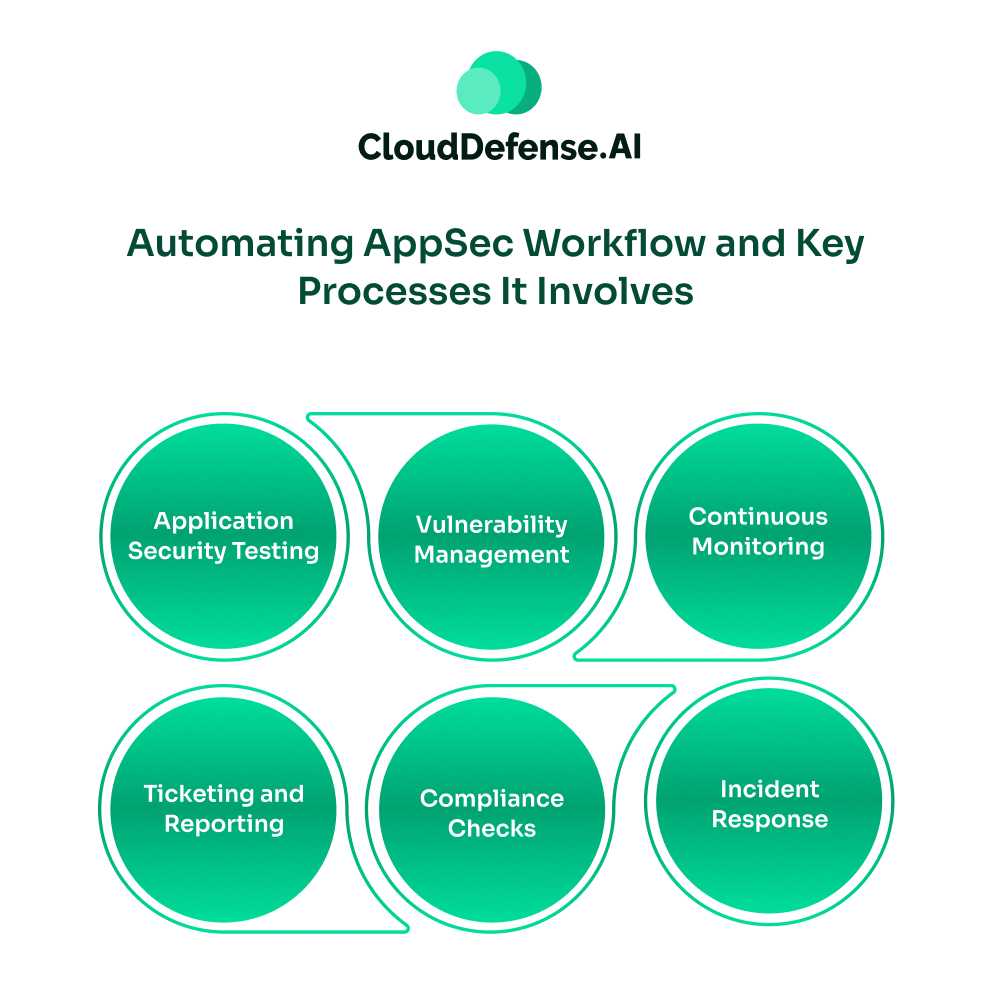
Automating AppSec workflow indicates the process of leveraging tools and processes to automate all necessary workflows within an application security lifecycle. It not only streamlines the complete security process but also enhances efficiency with minimal manual effort.
From automating security testing, monitoring, and vulnerability checks to alerting and reports, automation of AppSec workflow involves a lot of tasks. It is vital for modern organizations to automate the application security workflows as it helps them cope with modern security and reduce breaches.
When an organization performs AppSec workflow automation, it automates a lot of tasks. The automation effort involves:
- Application Security Testing: Automating AppSec security testing involves the usage of SAST, DAST, SCA and IAST that automatically scan application code for vulnerabilities. It serves as a vital component of the automation effort.
- Vulnerability Management: The automation approach also involves automating vulnerability management. It will help the team with automated tools to detect, assess, prioritise, and track vulnerabilities, ensuring faster vulnerability fixes.
- Continuous Monitoring: When you are using shift-left tools and implementing security early in the CI/CD pipeline, continuous monitoring becomes a priority. Automating workflow helps in continuous monitoring in the SDLC without hampering development speed.
- Ticketing and Reporting: Ticketing and reporting are a tiring process in modern AppSec. Automating the process assists in creating and managing tickets for vulnerabilities in the system. It also automatically assigns the ticket to the appropriate team and generates a report.
- Compliance Checks: Automation of AppSec workflow involves automating the compliance check process. Automation will enable the organization to constantly check its compliance with regulatory, industry standard, and internal security policy requisites.
- Incident Response: When automating workflows, the incident response processes are completely automated. It involves automatically assigning tasks and implementing specific remediation efforts when a vulnerability is detected.
Why AppSec Workflow Automation Has Become a Necessity
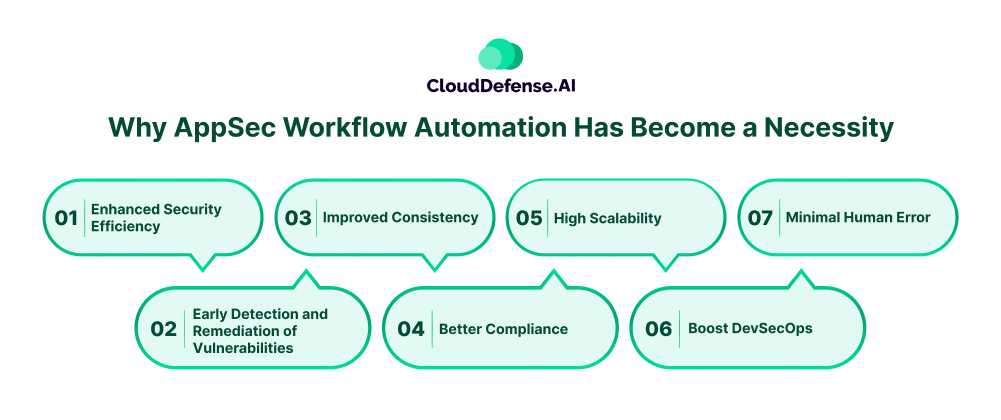
Before knowing about how to automate AppSec workflow, it is vital to know why you need to automate it. Here are some crucial benefits that make AppSec Workflow automation a necessity:
- Enhanced Security Efficiency: Automated workflows involve automating most of the repetitive security tasks. This gives security and development to get involved in complex and vital security tasks.
- Early Detection and Remediation of Vulnerabilities: The approach of automating workflows involves integrating security checks early into the CI/CD pipeline. This enables the team to identify vulnerabilities early and automatically remediate them. It reduces the effort of fixing common vulnerabilities and eliminates chances of security breach.
- Improved Consistency: When you automate important workflows, it ensures all the vital security checks are consistently done across the development environment. It bolsters the security guardrails against evolving cyber threats and reduces the chance of human error.
- Better Compliance: Organizations that maintain compliance often need to continuously perform security checks, maintain security policies, and ensure consistent vulnerability management. When the AppSec workflows are automated, it ensures continuous adherence to the regulatory requirements and provides a complete audit track.
- High Scalability: As your application development environment expands with time, the AppSec workflow automation also scales accordingly. It makes sure all the security workflows cope with increasing organizational growth.
- Boost DevSecOps: Automation of the workflows boosts the DevSecOps culture by ensuring everyone is responsible for the application security. It boosts the collaborative nature between development, operation, and security teams and ensures implementation of security at every stage.
- Minimal Human Error: Manually managing AppSec workflows introduces a lot of human error, like inconsistency in the security processes. However, automation brings standardization to the security checks, eliminating all human errors.
Step-By-Step Guide to AppSec Workflow Automation
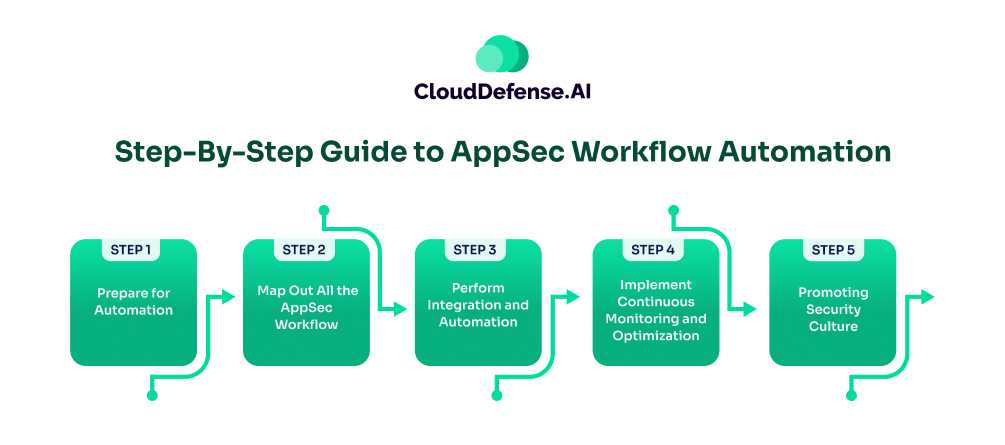
Automating your AppSec workflow requires a structured and strategic approach. You need to be precise with your requirements and make approaches accordingly. However, before getting into how to automate AppSec workflow, you need to consider certain aspects:
- Robust DevOps: A robust DevOps is a necessity for effective AppSec workflow automation.
- Risk-Based Approach: You need to take a risk-based approach where you need direct automation efforts on assets and processes based on their importance and vulnerability.
- Getting the Right Tool: When it comes to automating your AppSec workflow, there is no universal tool. Depending upon your development workflow, budget, framework, technology stack, and security posture, you should consider an automation tool.
Now, let’s start with the step-by-step guide for AppSec workflow automation:
Step 1: Prepare for Automation
To begin with automation of your AppSec workflow, you need proper preparation. You need to prioritise the automation effort on the applications, data flows, and frameworks that will offer best value. You need to cover sensitive datasets and vital assets that require complete automation. You must properly define your security objective for the automation effort.
During preparation, you need to look for areas in the development environment that require automation. Identify critical manual workflows in CI/CD pipeline where automation will be effective.
Tasks like code analysis, vulnerability management, and IAC scanning should be included in the automation process. While planning for automation, make sure it coincides with your organization’s business goals and fulfils all the specific industry regulatory requirements.
Step 2: Map Out All the AppSec Workflow
Your team also needs to map out all the AppSec workflows that will be covered under automation. You need to prepare documentation of all the security processes in your development environment, ranging from code committing to deployment. All the bottlenecked processes must be prioritised first, along with repetitive tasks. While mapping out, you should work with security and development to identify every workflow.
Step 3: Perform Integration and Automation
This is an important part of the automation process where you need to integrate security from the beginning and automate all the necessary processes. Here is how to do it:
- Implementing Shift Left Approach: Before you begin with security integration, you first need to implement a security-first mindset into your team. From the design phase, security should always be a top priority. You need to work with your security team to establish secure coding policies and practices that will ensure code is secure when they are committed. You need to invest in the best shift-left tools that will help you with the implementation.
- Integrating Security with CI/CD Pipeline: When it comes to automating the AppSec workflow, integration of security into CI/CD pipeline serves as a primary consideration. It will ensure all the code changes and commits are security checked before they are deployed. With integration of security, you also need to customize each pipeline stage to prevent merging when a vulnerability is detected.
- Automating Security Testing: You need to bring automation to automate all the security testing process. You need to automate the SAST, SCA, and DAST scanning process to continuously look for vulnerabilities in the build stage. You also need to automate the Interactive Application Security Testing process so that the tool can continuously look for malicious behavior within the application. The penetration testing should also be automated for identifying hidden vulnerabilities. It will also help in uncovering gaps in the existing security posture.
- Automating Updates to IaC and Configuration Files: You need to automate the process that will update the IaC templates and configuration file with best security policies and practices. You also need to implement automation that will continuously look for outdated or misconfigured tools and provide alerts for updates.
- Automating Vulnerability Prioritization and Remediation: To automate the prioritisation process, you have to take a risk-based approach. It will automate the process of vulnerability prioritisation based on different factors and assign it to the development team. In addition, you also need to automate the remediation process. It will help in automatically fixing known issues, providing remediation suggestions to developers, or rolling back any insecure code segment.
Step 4: Implement Continuous Monitoring and Optimization
After automating all the security scanning and vulnerability management processes, you need to implement continuous monitoring and optimization. Here are the areas you need to cover:
- Automate continuous Monitoring and Auditing: You should create a continuous monitoring process that will continuously search for vulnerabilities in your application and infrastructure. Devise a process that will perform regular security scans and audits to prevent any vulnerability from going unnoticed.
- Automate Testing of Patches: The testing of patches needs to be automated to ensure that all the security patches are applied properly all the time. It will also make sure that the patch doesn’t lead to any issue.
- Automated Real-Time Report: Introduce tools in the development environment that will automatically create real-time reports on various security aspects, including remediation process. It will be crucial for audit trails and devising security strategy.
Step 5: Promoting Security Culture
For an effective automation of AppSec workflow, you also need to create a security culture among your team. The best way to do this is by a DevSecOps approach that will encourage teams to collaborate and share responsibility for security of applications.
You also need to empower security teams with the appropriate tools and training they need to adopt the security culture. You need to create a feedback loop that will update the developer about security issues in real-time.
Vital Practices to Follow During AppSec Workflow Automation
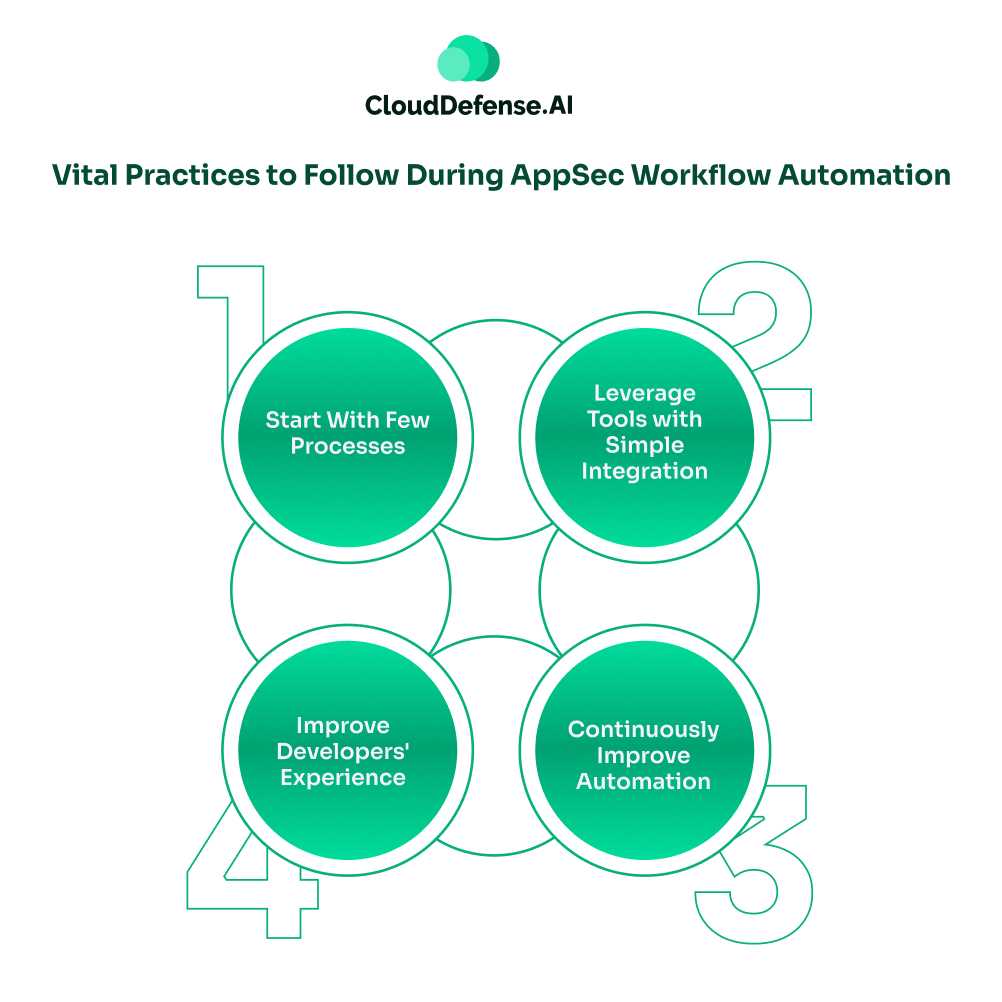
Knowing how to automate AppSec workflow won’t be sufficient; you also need to follow certain practices to ensure effective automation. Here are those vital practices:
- Start With Few Processes: Start with a pilot project where you just automate a few necessary AppSec workflows. If the project is effective, then gradually start automating other processes.
- Leverage Tools with Simple Integration: You should go for shift-left tools that come with powerful APIs for facilitating simple integration.
- Improve Developers’ Experience: Make efforts that will minimize any friction between the AppSec process and developers.
- Continuously Improve Automation: You should continuously monitor and review the automation effort and improve it. The proactive approach will help the team to cope with evolving threats.
Bottom Line
AppSec workflow automation has become a need of the hour for modern organizations. It is helping them to keep pace with modern high-velocity development approaches without compromising on application security. It is not only adopting AppSec tools but more about integrating and automating security into every stage of development. Through this guide, we have highlighted how to automate AppSec workflows and how your team can maintain a secure development environment.
While automating workflows, you can also take the assistance of QINA Pulse. It is one of a kind developer-first AppSec tool that acts as your context-aware security AI-assistant. From flagging vulnerabilities and creating tickings to generating compliance reports, QINA Pulse will automate most of the tasks. Book a live demo to know more about its capabilities.

